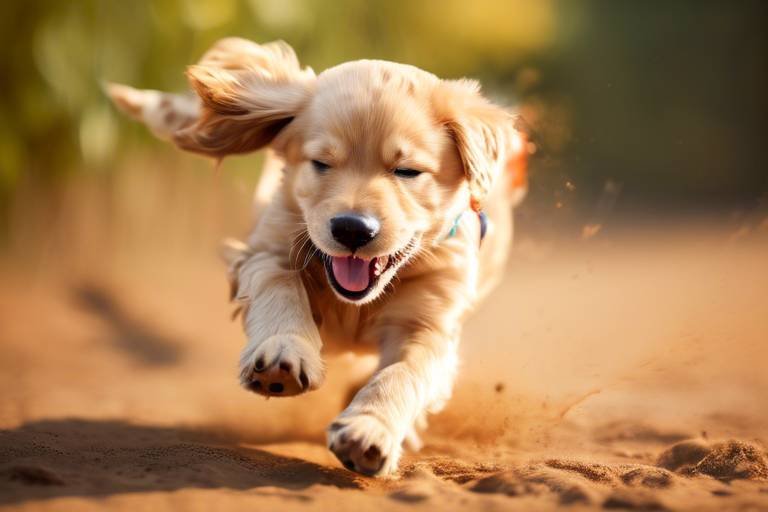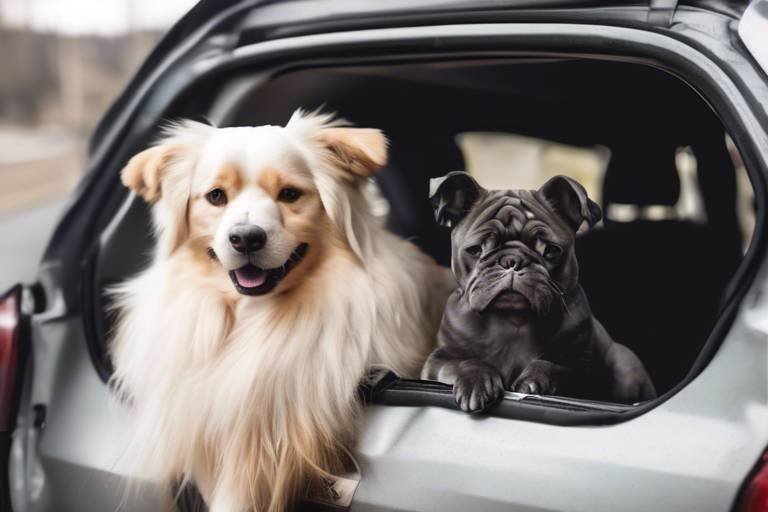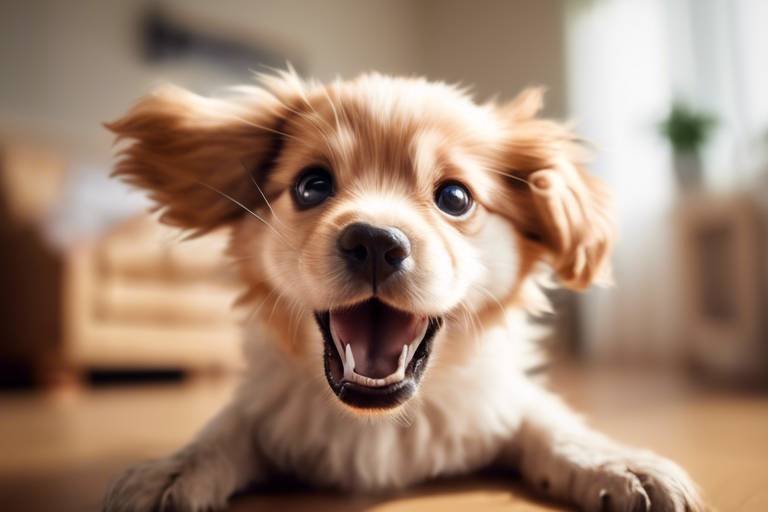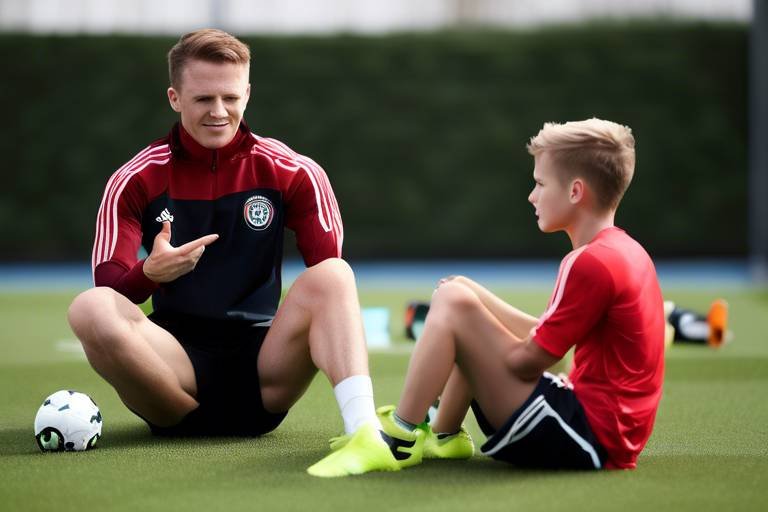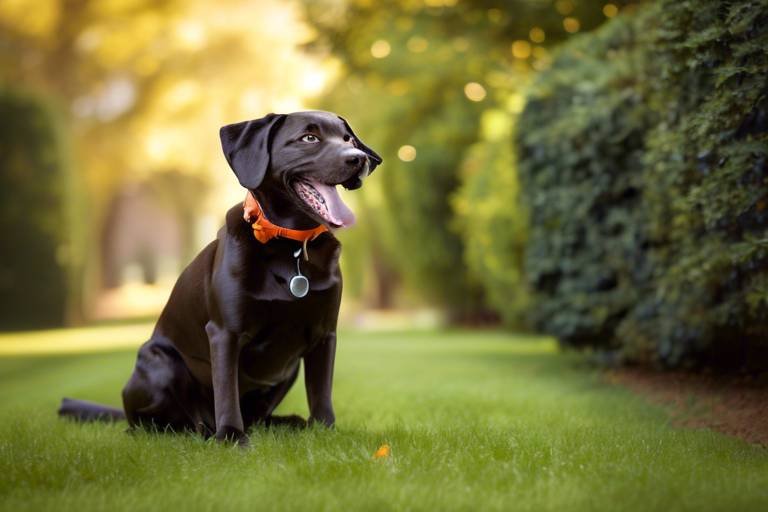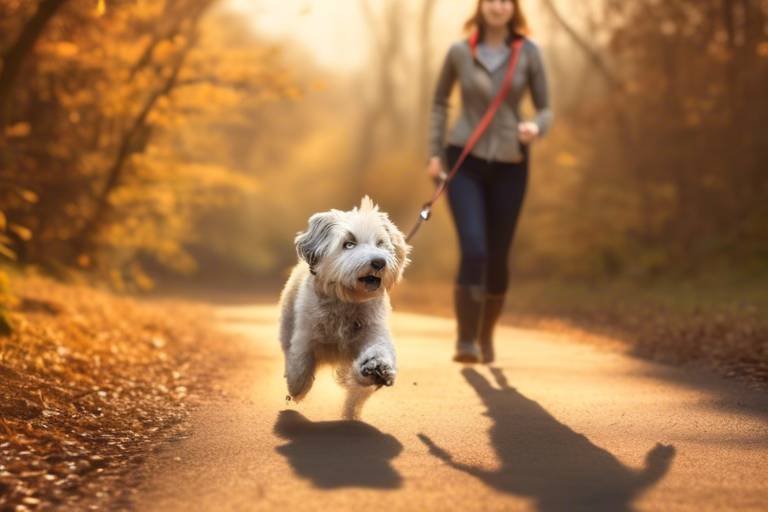How to Train Your Dog to Follow a Scent
Training your dog to follow a scent can be one of the most rewarding experiences for both you and your furry friend. Imagine the thrill of watching your dog use their incredible nose to track down a hidden object or follow a specific scent trail! Not only does this type of training enhance your dog's natural abilities, but it also strengthens the bond between you two. In this article, we will guide you through the essential steps and techniques for training your dog to effectively follow a scent. With patience and practice, you can turn your dog into a skilled tracker!
Did you know that a dog's sense of smell is estimated to be between 10,000 to 100,000 times more acute than that of humans? This extraordinary ability allows dogs to detect scents at incredible distances and differentiate between various odors. Understanding how your dog perceives scents is crucial for effective training. Dogs have a specialized organ called the Jacobsen's organ, which helps them analyze scents in their environment. This means that every time your dog sniffs around, they are gathering a wealth of information. By engaging in scent training, you not only tap into their natural instincts but also provide them with mental stimulation that is vital for their overall development.
Selecting an appropriate scent is crucial for successful training. The right scent can motivate your dog and make the training process enjoyable. There are two main categories of scents: natural and synthetic. Understanding the differences between these options can help you choose the best fit for your dog.
Natural scents, such as food items or specific herbs, can be highly motivating for dogs. These scents are often more appealing because they are familiar and enticing. When using natural scents, consider the following:
- Food-Based Scents: Using food-based scents can drive your dog's motivation to track. For instance, you might use treats like chicken or beef, which can be hidden for your dog to find. This not only encourages them to follow the scent but also makes the training session fun and rewarding.
- Environmental Scents: Environmental scents, such as those from plants or other animals, can also be used. These scents enrich the training experience and engage your dog in a more dynamic way. For example, you could use the scent of grass or the smell of a nearby animal to challenge your dog's tracking skills.
Synthetic scents offer consistency and reliability in training. They are often used in professional training scenarios because they can be precisely controlled. Popular synthetic scent options include:
- Essential Oils: Many trainers use essential oils to create specific scent trails.
- Commercial Scent Kits: These kits are designed for training purposes and come with various scents for your dog to track.
Integrating synthetic scents into your training regimen can provide your dog with a clear target to follow, making the learning process more straightforward.
Before diving into scent tracking, it's essential to establish basic obedience commands. These fundamental techniques lay the groundwork for successful scent training. Commands like "sit," "stay," and "come" are crucial for maintaining control during training sessions. Moreover, teaching your dog to focus and pay attention is vital for scent training. You can enhance your dog's concentration by practicing short training sessions filled with fun and engaging activities.
One effective method to build focus is to use interactive toys or puzzles that require your dog to think critically. This not only sharpens their mind but also prepares them for the concentration needed in scent work. Remember, a dog that is mentally stimulated is more likely to perform well during scent training!
Positive reinforcement is key to successful training. When your dog successfully follows a scent or performs a command correctly, reward them immediately with praise or a treat. This reinforces the desired behavior and encourages your dog to repeat it. Over time, your dog will associate scent tracking with positive experiences, making them eager to participate.
Once your dog has mastered the basics, you can introduce advanced scent training techniques. These methods challenge your dog and refine their tracking skills, making the training process even more exciting!
Engaging your dog in tracking exercises can significantly enhance their skills. For example, you can create a simple scent trail by dragging a scented item along the ground and encouraging your dog to follow it. Gradually increase the complexity of the trails by adding turns, obstacles, and varying distances.
If you're interested in advanced applications, search and rescue training can be an exciting avenue. This type of training prepares your dog for real-world scenarios where they may need to locate missing persons or objects. Start by teaching your dog to find specific items in controlled environments before progressing to more complex searches in varied terrains.
Q: How long does it take to train my dog to follow a scent?
A: The time it takes varies by dog. Some may pick it up quickly, while others may need more time and practice.
Q: Can any dog learn scent tracking?
A: Yes! Most dogs have a natural instinct to track scents, but some breeds may excel more than others.
Q: Do I need special equipment for scent training?
A: While special equipment can help, you can start with everyday items like treats or toys. As you progress, you might consider investing in scent training kits.

Understanding Your Dog's Sense of Smell
Have you ever wondered why dogs are often referred to as man's best friend? One of the key reasons is their **extraordinary sense of smell**. In fact, a dog's sense of smell is estimated to be between 10,000 to 100,000 times more sensitive than that of humans. This incredible ability allows them to detect scents at incredibly low concentrations, making them exceptional at tracking and scent work. But how exactly do dogs perceive scents, and why is it essential to train them in this skill?
Dogs have a unique olfactory system that enables them to identify and differentiate between a vast array of smells. Their noses are equipped with approximately 300 million olfactory receptors, compared to about 5 million in humans. This remarkable structure allows dogs to not only smell but also to *interpret* scents in ways we can only begin to understand. For instance, they can distinguish between the scent of an individual person, other animals, and even emotional states based on pheromones.
Understanding how dogs experience the world through their noses opens up a whole new realm of training possibilities. When you engage in scent training, you’re not just teaching your dog a trick; you’re tapping into their natural instincts and enhancing their cognitive abilities. This training is crucial for their overall development, as it helps to stimulate their minds and can lead to a more well-rounded and happy pet.
Moreover, scent training can strengthen the bond between you and your dog. As they learn to follow scents and respond to your commands, they develop a deeper trust in your guidance. It’s not just about tracking; it’s about communication and teamwork. Just think of it as a game of hide and seek, where your dog is the seeker, and you are the one leading them to success!
In summary, understanding your dog’s sense of smell is the first step in effective scent training. By appreciating their natural abilities, you can create a more engaging and fulfilling training experience. So, are you ready to unlock the true potential of your furry friend?

Choosing the Right Scent for Training
When it comes to training your dog to follow a scent, choosing the right scent is absolutely crucial. The scent you select can make or break your training sessions, so it’s worth taking the time to consider your options carefully. Dogs have unique preferences, and what excites one dog might not have the same effect on another. Therefore, understanding the types of scents available and how they can motivate your furry friend is essential.
There are two main categories of scents you can choose from: natural scents and synthetic scents. Each has its own set of advantages and considerations. Natural scents are often more relatable for dogs, as they mimic the scents they encounter in their daily lives. On the other hand, synthetic scents provide consistency and can be tailored to specific training needs. Let’s dive deeper into these options.
Natural scents can be incredibly motivating for dogs. They are often derived from food items, plants, or even other animals. Here are a few examples:
- Food-Based Scents: Dogs are naturally drawn to food, making food-based scents a fantastic choice. Think of items like chicken, beef, or even cheese. These scents can trigger a dog’s instinct to search and find, making training sessions more engaging.
- Environmental Scents: Scents from the environment, such as grass, flowers, or the scent of other animals, can also be used. These scents can create a more dynamic training experience, as they mimic real-life scenarios your dog might encounter.
When using natural scents, it's important to ensure they are fresh and potent. For instance, if you're using food, make sure it hasn’t gone stale, as this could diminish your dog's interest. Additionally, consider your dog’s individual preferences; some dogs may be more motivated by certain scents over others. Experimentation is key!
Synthetic scents, on the other hand, offer a level of consistency that natural scents might lack. These scents are manufactured to be uniform and reliable, which can be particularly beneficial during training. Popular synthetic scent options include:
- Essential Oils: Many trainers use essential oils, which can be diluted to create a scent trail. Oils like lavender or peppermint can be intriguing for dogs.
- Commercial Scent Products: There are various products on the market specifically designed for scent training, such as scent kits that come with a variety of smells.
When integrating synthetic scents into your training regimen, it’s essential to introduce them gradually. Start with a scent that your dog is unfamiliar with but is still intrigued by. This will help keep their interest piqued and make the training sessions more enjoyable. Remember, the goal is to create a rewarding experience that encourages your dog to engage with the scent.
In conclusion, whether you opt for natural or synthetic scents, the key is to choose something that captivates your dog’s interest and motivates them to follow the scent trail. Keep in mind that every dog is different, and what works for one may not work for another. So don’t hesitate to experiment and adjust your training approach based on your dog’s unique preferences. Happy training!
Natural Scents
When it comes to training your dog to follow a scent, can be incredibly powerful tools. Think about it: dogs are natural hunters, and their noses are finely tuned instruments for detecting a variety of smells. By using scents that are familiar and appealing to your dog, you can tap into their instincts and make training both fun and effective.
Natural scents can range from food items to specific herbs, and they can significantly enhance your dog's motivation to track. For instance, the scent of fresh meat or a favorite treat can be like a magnet for your furry friend. Not only do these scents motivate your dog, but they also engage their senses in a way that is both stimulating and rewarding. This is why incorporating natural scents into your training routine can lead to remarkable results.
However, it’s essential to understand how to use these scents effectively. Here are a couple of key points to consider:
- Familiarity: Use scents that your dog is already familiar with. This could be their favorite toy, a piece of clothing, or even a specific food item. Familiar scents will make it easier for your dog to engage and understand what you want them to do.
- Variety: Introduce a range of natural scents to keep your dog interested. You might start with food scents, then move on to environmental scents like grass, leaves, or even the scent of other animals. The more diverse the scents, the more your dog will learn to adapt and track.
One of the most effective ways to use natural scents is through food-based scents. Imagine this: you hide a piece of chicken in your backyard and encourage your dog to find it. The moment they catch a whiff of that delicious aroma, their instincts kick in, and they’re off! This not only reinforces their tracking abilities but also strengthens your bond as you work together towards a common goal.
On the other hand, environmental scents can add an exciting twist to your training. These scents can be gathered from your surroundings, such as the smell of a nearby park or the scent trail left by another animal. Using these scents can help your dog learn to differentiate between various smells, enhancing their skills and keeping the training sessions dynamic and engaging.
In conclusion, are not just an excellent way to train your dog; they are a gateway to deeper communication and understanding between you and your pet. By using familiar and varied scents, you can create a more enriching training environment that not only hones your dog’s skills but also makes the experience enjoyable for both of you. So, get ready to unleash your dog's potential and watch as they become a scent-tracking superstar!
Here are some common questions regarding the use of natural scents in dog training:
- What are the best natural scents to use for training? Food items like chicken, beef, or fish are highly motivating, as well as herbs like mint or basil.
- How do I introduce my dog to a new scent? Start by letting your dog sniff the scent directly, then gradually incorporate it into tracking exercises.
- Can I use multiple scents at once? Yes, but it’s best to introduce them one at a time to avoid overwhelming your dog.
Food-Based Scents
When it comes to training your dog to follow a scent, can be a game changer. Dogs are naturally drawn to food, and using this to your advantage can significantly enhance their motivation and engagement during training sessions. Imagine your dog, tail wagging and nose twitching, as they catch a whiff of their favorite treat! This excitement can translate into a more focused and enthusiastic training experience.
To effectively incorporate food-based scents into your training, consider the following tips:
- Choose High-Value Treats: Select treats that your dog absolutely loves. This could be anything from pieces of chicken, cheese, or even specialized training treats that are aromatic and enticing.
- Start Small: Begin with small amounts of the food scent. You want your dog to be curious and eager, not overwhelmed. A tiny piece of food can go a long way in capturing their attention.
- Use Scented Items: You can also use items that have been infused with food scents, such as a piece of cloth soaked in broth. This can create a lasting scent trail that your dog will enjoy following.
Another effective method is to create a scent trail. You can do this by placing small pieces of food at intervals along a path. This not only encourages your dog to follow the scent but also rewards them for their efforts along the way. As they get better, you can gradually increase the distance between the food pieces, making the challenge more exciting.
Furthermore, it's essential to keep the training sessions short and fun. Dogs have a limited attention span, so mixing in playtime or breaks can help maintain their interest. Always end on a positive note, rewarding your dog with praise and treats when they successfully follow the scent trail. This reinforces their behavior and keeps them eager for the next training session.
In summary, utilizing food-based scents can significantly enhance your dog’s tracking abilities. With the right approach, you can turn training into an enjoyable game that strengthens your bond while developing your dog’s natural instincts. So, gather those treats, and let the scent training adventure begin!
Q: How do I know which food scents to use for training?
A: Start with your dog's favorite treats. Experiment with various options to see which ones excite them the most. Foods like chicken, cheese, or even liver can be great motivators.
Q: Can I use human food for scent training?
A: Yes, you can use human food, but ensure it's safe for dogs. Avoid any toxic foods like chocolate, grapes, or onions.
Q: How often should I train my dog using food scents?
A: Regular short sessions are best. Aim for 5-10 minutes a few times a week to keep your dog engaged without overwhelming them.
Q: What if my dog loses interest in the food scent?
A: If your dog seems uninterested, try switching to a different scent or treat. Sometimes, a new aroma can reignite their enthusiasm!
Environmental Scents
When it comes to training your dog to follow a scent, can be a game changer. These scents are all around us, emanating from plants, animals, and various elements in nature. Utilizing them in your training can create a more dynamic and engaging experience for your furry friend. Imagine your dog sniffing out the trail of a squirrel or following the scent of a wildflower; this not only sharpens their tracking abilities but also enriches their natural instincts.
One of the benefits of using environmental scents is that they are often more stimulating for dogs than artificial ones. Dogs are naturally curious creatures, and when they encounter a new scent in their environment, it piques their interest. This can lead to a more enthusiastic training session. However, it’s essential to consider a few factors when incorporating these scents into your training routine:
- Familiarity: Start with scents that your dog is already familiar with. This could be the smell of grass, leaves, or even the scent of other animals they encounter during walks.
- Variety: Introduce a variety of scents to keep your dog engaged. Different plants, flowers, and even the scent of different terrains can provide exciting challenges.
- Safety: Ensure that the scents you choose are safe for your dog. Some plants can be toxic, so it's crucial to do your research before incorporating them into your training.
To effectively use environmental scents in your training, consider the following techniques:
- Scavenger Hunts: Set up a scavenger hunt in your backyard or a safe outdoor area. Hide treats or toys with specific scents and encourage your dog to find them. This not only enhances their tracking skills but also makes the experience fun and rewarding.
- Nature Walks: During walks, allow your dog to explore different scents. Encourage them to sniff around and reward them when they show interest in a particular scent. This helps them associate positive experiences with scent tracking.
- Obstacle Courses: Create a mini obstacle course that incorporates various environmental scents. Use different surfaces like grass, dirt, and gravel to challenge your dog and keep them engaged.
Incorporating environmental scents into your dog’s training can be incredibly rewarding. Not only does it enhance their ability to track scents, but it also strengthens the bond between you and your furry companion. As they learn to navigate through the world using their nose, you’ll both experience the joy of discovery together.
Q1: How do I know which environmental scents to use for training?
A1: Start with familiar scents your dog encounters daily, like grass or trees. Gradually introduce new scents to keep the training exciting.
Q2: Can all dogs be trained to follow scents?
A2: Most dogs have a natural instinct to track scents, but some breeds are more suited for scent work. With patience and practice, most dogs can learn to follow scents effectively.
Q3: How long should I train my dog with environmental scents each day?
A3: Short, frequent training sessions of about 10-15 minutes are often more effective than longer sessions. This keeps your dog engaged without overwhelming them.
Synthetic Scents
Synthetic scents are a fantastic tool in the world of dog training, providing a level of consistency and reliability that can significantly enhance your dog's scent-following skills. Unlike natural scents, which can vary in intensity and availability, synthetic scents are engineered to provide the same aroma every time, making them an excellent choice for training sessions. Imagine having a scent that never fades or changes; that’s what synthetic scents offer!
When it comes to synthetic scents, there are several popular options that you can incorporate into your training regimen. For instance, you might consider using:
- Essential oils: These concentrated plant extracts can provide strong, recognizable scents that dogs can learn to identify.
- Commercial tracking scents: Many companies offer scents specifically designed for tracking training, ensuring your dog has a reliable target.
- Sport-specific scents: If you're training for specific activities like search and rescue, you can find synthetic scents that mimic the odors found in those environments.
One of the key benefits of using synthetic scents is their ability to be tailored to your dog's training needs. For example, if your dog is particularly motivated by a certain scent, you can find a synthetic version that matches that aroma, ensuring that your dog remains engaged and eager to work. This is particularly useful in advanced training scenarios where precision is crucial.
Moreover, synthetic scents can be easily transported and stored, making them incredibly convenient for training on the go. You won’t have to worry about the scent degrading or becoming less effective over time, which is a common issue with natural scents. This reliability allows you to focus more on your dog's training and less on the logistics of scent management.
To effectively integrate synthetic scents into your training routine, start by introducing the scent in a controlled environment. Allow your dog to sniff the scent, rewarding them with treats or praise when they show interest. Gradually increase the complexity of the exercises by hiding the scent in various locations, encouraging your dog to use their nose to locate it. By using synthetic scents, you can create a structured training plan that builds your dog's confidence and skills progressively.
In summary, synthetic scents are not just a convenient option; they are a powerful tool that can elevate your dog's scent training experience. By utilizing these scents, you can ensure that your training sessions are productive, engaging, and, most importantly, fun for both you and your furry friend!
Q: What are synthetic scents made of?
A: Synthetic scents are typically made from chemical compounds that mimic the natural aromas of various substances. They are designed to be consistent and long-lasting, making them ideal for training purposes.
Q: Are synthetic scents safe for my dog?
A: Yes, most synthetic scents are safe for dogs when used as directed. However, it’s always best to check the ingredients and consult with your veterinarian if you have concerns.
Q: How do I choose the right synthetic scent for my dog?
A: Consider your dog's preferences and motivations. Experiment with different scents to see which ones excite your dog the most. You can also consult with professional trainers for recommendations tailored to your dog's training needs.
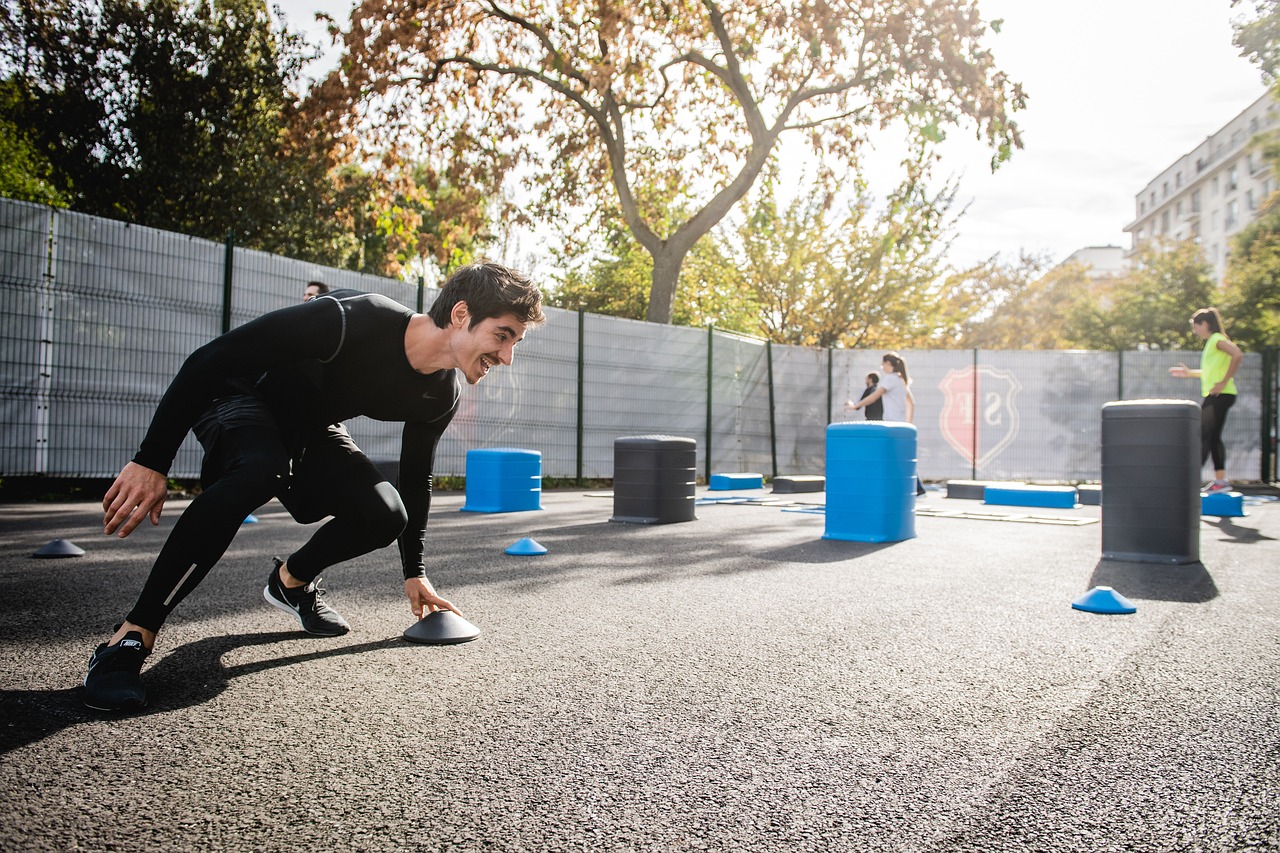
Basic Training Techniques
Before diving into the exciting world of scent training, it's essential to lay a solid foundation with basic obedience commands. Think of this phase as building a sturdy house; without a strong base, everything else can crumble. Start by teaching your dog fundamental commands like sit, stay, and come. These commands not only enhance your dog's overall behavior but also create a framework for more advanced training techniques. Consistency is key here—make sure to practice regularly so your dog understands what you expect from them.
One of the most critical aspects of basic training is building focus and attention. Dogs are naturally curious creatures, and their attention can easily drift. To improve your dog's concentration, try engaging them in short training sessions filled with fun and excitement. Use a combination of treats and praise to keep their interest piqued. For instance, while practicing commands, reward your dog immediately when they respond correctly. This positive reinforcement helps them associate the command with a pleasurable outcome, making them more likely to comply in the future.
Another vital technique is to use rewards effectively. Positive reinforcement isn’t just a buzzword; it's a powerful tool that can transform your training sessions. Dogs respond best when they know that good behavior leads to rewards. Whether it's a tasty treat, a favorite toy, or even a belly rub, ensure that the reward is something your dog truly values. For example, if your dog loves squeaky toys, use that as a reward when they successfully follow a command. This not only encourages them to repeat the behavior but also strengthens the bond between you and your furry friend.
As you progress, remember to keep the training sessions short and engaging. Dogs have a limited attention span, and lengthy sessions can lead to frustration for both of you. Aim for sessions lasting around 5 to 10 minutes, gradually increasing the duration as your dog becomes more adept at following commands. You might also want to incorporate some playful elements into your training. For example, after a successful session, play a quick game of fetch or tug-of-war. This not only reinforces their learning but also makes training a fun experience.
In addition to these techniques, it's beneficial to create a structured training environment. Choose a quiet location free from distractions to help your dog focus. As they become more comfortable with the commands, you can gradually introduce distractions to challenge them further. For instance, practice commands in a park where other dogs and people are present. This will help your dog learn to respond to you, even in stimulating environments.
Finally, don’t forget the importance of patience and consistency. Every dog is unique, and some may take longer to learn than others. Celebrate small victories and remain patient throughout the training process. Remember, training is not just about teaching commands; it's about building a trusting relationship with your dog. So, take a deep breath, stay positive, and enjoy the journey of training together!
Q: How long does it take to train a dog to follow a scent?
A: The time it takes can vary significantly based on the dog's age, breed, and previous training experience. Generally, you can see results in a few weeks with consistent practice.
Q: Can any dog learn scent training?
A: Yes! Most dogs have a natural ability to follow scents. However, some breeds may excel more than others due to their innate instincts.
Q: What if my dog loses interest during training?
A: If your dog seems to lose interest, try changing the training environment, using higher-value rewards, or shortening the training sessions. Keeping it fun and engaging is crucial!
Building Focus and Attention
Building your dog's focus and attention is a crucial step in training them to follow a scent effectively. Imagine trying to solve a puzzle with a friend who keeps getting distracted by everything around them—frustrating, right? The same applies to your dog. If they can't focus, they won't be able to track scents as efficiently. To enhance your dog's concentration, you can implement various techniques that engage their senses and keep their minds sharp.
One effective method is to use short training sessions that are packed with fun and excitement. Dogs have short attention spans, so keeping training sessions brief—around 5 to 10 minutes—can help maintain their interest. During these sessions, introduce a variety of scents and commands to keep your dog engaged. You might say, “Let’s find it!” in an enthusiastic tone, which can pique their curiosity and motivate them to participate actively.
Another technique is to create a distraction-free environment. Start training in a quiet space where your dog can focus solely on you and the scent. As they become more proficient, gradually introduce distractions, such as other people or pets, to challenge their focus. This gradual exposure helps your dog learn to concentrate despite external stimuli, which is essential for real-world tracking scenarios.
Additionally, incorporating interactive games can significantly boost your dog's attention span. Games like hide-and-seek, where you hide a favorite toy or treat and encourage your dog to find it, can sharpen their focus and tracking skills. Not only do these activities make training enjoyable, but they also strengthen the bond between you and your furry friend. Remember, a happy dog is a focused dog!
Lastly, consider using clicker training as a tool to reinforce focus. A clicker can mark the exact moment your dog pays attention to a scent or follows your command. By associating the sound of the clicker with a reward, your dog will learn to stay focused on the task at hand. Over time, this positive reinforcement will help them understand that paying attention yields great rewards.
In summary, building focus and attention in your dog is not just about training; it's about creating a fun and engaging environment where your dog can thrive. By keeping sessions short, minimizing distractions, incorporating interactive games, and using clicker training, you'll set your dog up for success in their scent-following journey. Remember, the more focused your dog is, the more effective they’ll be at tracking scents, leading to a rewarding experience for both of you!
- How long should I train my dog each day? It's best to keep training sessions short, around 5 to 10 minutes, to maintain your dog's interest.
- What types of rewards work best for training? Treats, praise, and playtime are excellent rewards that can motivate your dog during training.
- Can I train my dog to follow a scent indoors? Absolutely! Start indoors in a distraction-free environment and gradually introduce outdoor training.
- How do I know if my dog is focused enough? If your dog is actively engaging with the scent and responding to commands, they are likely focused.
Using Rewards Effectively
When it comes to training your dog, can make all the difference in the world. Think of rewards as the fuel that powers your dog's motivation engine. Just like a car needs gas to run, your dog needs incentives to engage fully in scent training. But what does it mean to use rewards effectively? It’s not just about giving your furry friend a treat every time they follow a scent; it’s about timing, choice, and consistency.
First off, let's talk about timing. Timing is crucial in dog training. When your dog successfully follows a scent, you want to reward them immediately. This way, they can connect the dots between their action and the reward. If you wait too long, your dog may not understand what they are being rewarded for. Imagine telling a child they did a great job on a test weeks after they took it; the excitement would be lost! So, as soon as your dog sniffs out the target, whip out that reward!
Next, consider the type of reward you’re using. Dogs are like people in that they have different preferences. Some might go wild for treats, while others may be more motivated by praise or playtime. It’s essential to experiment and find what gets your dog’s tail wagging the most. For instance, if your dog is food-driven, consider using high-value treats like chicken or cheese. If they love to play, a quick game of fetch might be the perfect reward. You can even use a combination of rewards to keep things exciting!
Consistency is another key factor. Just like you wouldn’t expect a child to learn math if you only taught them once a week, your dog needs regular reinforcement to understand the desired behavior. Make it a habit to reward your dog every time they successfully follow a scent during training sessions. This consistency will help them grasp what is expected and reinforce the behavior over time.
Moreover, you can also incorporate a variable reward schedule as your dog becomes more proficient. This means rewarding them unpredictably instead of every single time. It keeps your dog engaged and excited, as they’ll always be wondering when the next treat or praise will come. Think of it like a slot machine: the thrill of not knowing when you’ll hit the jackpot keeps you pulling the lever!
Lastly, don't forget to include social rewards in your training. Dogs are social creatures and thrive on interaction with their humans. A simple pat on the head, a cheerful voice, or even a quick cuddle can be incredibly rewarding for them. These social interactions can sometimes be more motivating than food, especially for those dogs who crave companionship.
In summary, using rewards effectively in your dog’s scent training involves timely, appropriate, and consistent reinforcement. By understanding your dog’s preferences and mixing in social interactions, you can create a training environment that is both effective and enjoyable. So, go ahead and make your training sessions a fun and rewarding experience for both you and your furry friend!
- What types of rewards can I use for scent training?
You can use treats, toys, praise, or even playtime as rewards. The key is to find what motivates your dog the most.
- How soon should I reward my dog after they follow a scent?
Reward your dog immediately after they successfully follow a scent to create a strong association between the action and the reward.
- Can I use both food and praise as rewards?
Absolutely! Mixing different types of rewards can keep your dog engaged and motivated during training sessions.
- What if my dog loses interest in rewards?
Try changing the type of reward or the training environment. Sometimes a new treat or a different location can rekindle their interest.

Advanced Scent Training Methods
Once your dog has mastered the basics of scent training, it's time to dive into the exciting world of . These techniques not only challenge your dog's abilities but also refine their skills, transforming them into a proficient tracker. Think of this stage as taking your dog from a novice to a seasoned pro in the art of scent detection. Just like a musician perfecting their craft, your dog will thrive on the challenges you present.
One of the most effective ways to enhance your dog's tracking skills is through tracking exercises. These exercises can range from simple to complex, depending on your dog's progress. For instance, you might start by laying a scent trail in your backyard, gradually increasing the difficulty by incorporating more distractions or longer distances. The key here is to keep the sessions engaging and rewarding, ensuring your dog remains motivated. Remember, every successful tracking session should end with a celebration—think of it as a victory lap for your furry friend!
Another thrilling avenue to explore is search and rescue training. This method not only hones your dog’s scent-following abilities but also prepares them for real-world applications. Imagine your dog confidently navigating through challenging terrains, skillfully locating missing persons, or finding lost items. To get started, you can simulate search scenarios using various scents and objects. For example, you might hide a favorite toy or a piece of clothing belonging to a family member, allowing your dog to track it down. This not only builds their confidence but also reinforces their bond with you as they learn to trust your guidance in these scenarios.
| Training Method | Benefits | Considerations |
|---|---|---|
| Tracking Exercises | Enhances tracking skills, builds confidence | Start simple, gradually increase difficulty |
| Search and Rescue Training | Prepares for real-world applications, strengthens bond | Requires patience and consistency |
As you progress, it's essential to maintain a balance between challenge and fun. You want your dog to be excited about the training sessions, not overwhelmed. Incorporating games can be an effective way to keep things light-hearted. For instance, you could turn tracking into a treasure hunt, where your dog has to locate hidden treats or toys. This not only makes training enjoyable but also reinforces their natural instincts.
In summary, advanced scent training methods are all about pushing boundaries while keeping the experience enjoyable for your dog. Whether you’re engaging in tracking exercises or preparing for search and rescue scenarios, remember that the journey should be as rewarding as the destination. Your dog will appreciate the time spent together, and you’ll be amazed at their growth and capabilities.
- How long does it take to train a dog in advanced scent training? The duration varies based on the dog’s age, breed, and prior experience. Consistent practice and patience are key!
- Can any dog participate in scent training? Yes! Most dogs have a natural ability to follow scents, though some breeds may excel more than others.
- What should I do if my dog loses interest during training? It’s crucial to keep sessions short and fun. If your dog seems disinterested, take a break and try a different approach or game.
Tracking Exercises
Engaging your dog in is an exciting way to enhance their scent-following abilities while also providing them with physical and mental stimulation. These exercises not only refine their skills but also strengthen the bond between you and your furry friend. Think of it as a fun game of hide and seek where your dog gets to use their powerful nose to find hidden treasures! By incorporating various tracking exercises into your routine, you can create a dynamic training environment that keeps your dog motivated and eager to learn.
One effective tracking exercise involves creating a simple scent trail using treats or a favorite toy. To start, you can lay a trail of treats in a straight line over a short distance. Make sure the treats are spaced out enough for your dog to pick up on the scent without getting overwhelmed. As your dog successfully follows the trail, you can gradually increase the complexity by making the trail longer or incorporating turns and obstacles. This not only challenges your dog but also enhances their problem-solving skills as they learn to navigate through different environments.
Another engaging exercise is the “Find It” game. In this exercise, you’ll need a partner or a helper. While your dog watches, have your partner hide a treat or toy somewhere in the yard or house. Once it’s hidden, encourage your dog to use their nose to find it. This game is not only fun but also reinforces their natural instincts to track scents. Over time, you can increase the difficulty by hiding the item in more challenging locations or using less potent scents.
To track scents in more realistic scenarios, consider setting up a mini tracking course. You can use various objects, such as cones or markers, to create a path for your dog to follow. Start by walking a specific route while dragging a scented item behind you, leaving a trail for your dog to follow. This exercise mimics real-world tracking situations and helps your dog learn to differentiate between various scents. As your dog becomes more proficient, you can introduce distractions, such as other people or animals, to test their focus and determination.
To make tracking exercises even more enjoyable, consider incorporating teamwork. Engage friends or family members to join in on the fun by taking turns hiding and finding items. This not only keeps your dog excited but also builds their confidence as they successfully navigate through different challenges. Remember, the key to effective tracking exercises is to keep the sessions short and positive. End on a high note, celebrating your dog's achievements with plenty of praise and rewards!
- How often should I practice tracking exercises with my dog? It's best to practice tracking exercises several times a week, but keep each session short to maintain your dog's interest and enthusiasm.
- What if my dog gets distracted during tracking exercises? If your dog becomes distracted, try to refocus their attention by using a high-value reward or returning to a simpler exercise before gradually increasing the difficulty again.
- Can any dog learn to track scents? Yes! Most dogs have a natural instinct to track scents, but some breeds may excel more than others. With patience and practice, any dog can learn to follow a scent.
Search and Rescue Training
When it comes to , the stakes are incredibly high. This specialized training not only hones your dog’s scent-following abilities but also prepares them for real-world situations where their skills can save lives. Imagine your dog, confidently navigating through dense forests or urban environments, guided solely by their remarkable sense of smell. It's a thrilling prospect, isn't it?
To embark on this journey, you’ll want to start with a solid foundation in basic scent training. Just as a house needs a sturdy base, your dog needs to master the fundamentals before tackling more complex tasks. This means ensuring they can follow scents reliably and respond to commands without hesitation. Once your dog has grasped these basics, you can gradually introduce them to more challenging scenarios.
One effective method to elevate your dog’s training is to simulate real-life search and rescue situations. For instance, you can set up an exercise where you hide a person or an object in a designated area and encourage your dog to find them. This not only tests their tracking skills but also builds their confidence. Remember, every successful find boosts their motivation and reinforces the behavior you want to encourage.
Here’s a simple table to illustrate the different stages of search and rescue training:
| Training Stage | Description |
|---|---|
| Foundation Skills | Basic obedience and scent-following techniques. |
| Controlled Searches | Simulated scenarios with known outcomes to build confidence. |
| Realistic Scenarios | Training in varied environments to mimic actual search situations. |
| Advanced Techniques | Incorporating distractions and complex scent trails. |
As your dog progresses, it’s crucial to introduce environmental challenges. This could mean training in different weather conditions, terrains, or even urban settings. Each new environment presents unique scents and distractions, which will help your dog adapt and become more versatile in their tracking abilities. Think of it as taking your dog on an adventure, where every outing is a new opportunity for learning and growth.
Moreover, patience and consistency are your best friends in this process. Some dogs may grasp the concepts quickly, while others may take time to catch on. Celebrate the small victories along the way, and don’t hesitate to adjust your training techniques based on your dog’s individual needs. Just like people, each dog learns at their own pace.
Finally, consider joining a local search and rescue group or training club. This not only provides you with valuable resources and support but also allows your dog to interact with other trained dogs. It’s a fantastic way to learn from others and refine your training methods together. Plus, it adds a social aspect that can make training even more enjoyable for both of you!
- How long does it take to train a dog for search and rescue? The time varies based on the dog’s age, breed, and prior training. Typically, it can take several months to a couple of years to achieve proficiency.
- What breeds are best suited for search and rescue work? Breeds like German Shepherds, Labrador Retrievers, and Bloodhounds are often favored due to their strong sense of smell and trainability.
- Can any dog be trained for search and rescue? While most dogs can learn basic scent work, not every dog has the temperament or drive for search and rescue. It's essential to assess your dog's personality and motivation.
Frequently Asked Questions
- How do I start training my dog to follow a scent?
To kick off the scent training, begin by establishing basic obedience commands. This foundation will help your dog focus better during scent work. Start with simple exercises, like having them find a hidden treat, gradually increasing the complexity as they grasp the concept of tracking.
- What types of scents are best for training?
Choosing the right scent is crucial. Natural scents like food or specific herbs can be very motivating for dogs. On the other hand, synthetic scents provide consistency. Experiment with both types to see which one your dog responds to best!
- Can I use food-based scents for training?
Absolutely! Food-based scents are fantastic for motivation. You can use items like treats or even your dog's favorite snacks to encourage them to track. Just be sure to use small pieces to keep them engaged without overfeeding.
- How do I keep my dog focused during training?
Building focus takes practice! Use short training sessions filled with fun and rewards. Incorporate games that require attention, like hide-and-seek with scents, to make it engaging. The more excited they are, the better they’ll concentrate!
- What are some advanced scent training techniques?
Once your dog has mastered the basics, you can introduce tracking exercises that challenge their skills. Consider incorporating search and rescue scenarios, which not only refine their tracking abilities but also provide mental stimulation.
- Is scent training suitable for all dog breeds?
Yes! While some breeds may have a natural inclination toward scent work, all dogs can benefit from scent training. It’s a great way to engage their minds and strengthen your bond, regardless of their breed or background.
- How long does it take to train a dog to follow a scent?
The timeline can vary widely based on the dog's age, breed, and previous training. Some dogs may pick it up quickly in a few sessions, while others might take weeks or even months. Patience and consistency are key!
- What if my dog loses interest during training?
If your dog seems to lose interest, it might be time to change things up! Try varying the scents, using higher-value treats, or adjusting the training environment. Keeping it fun and engaging is essential for maintaining their enthusiasm.


